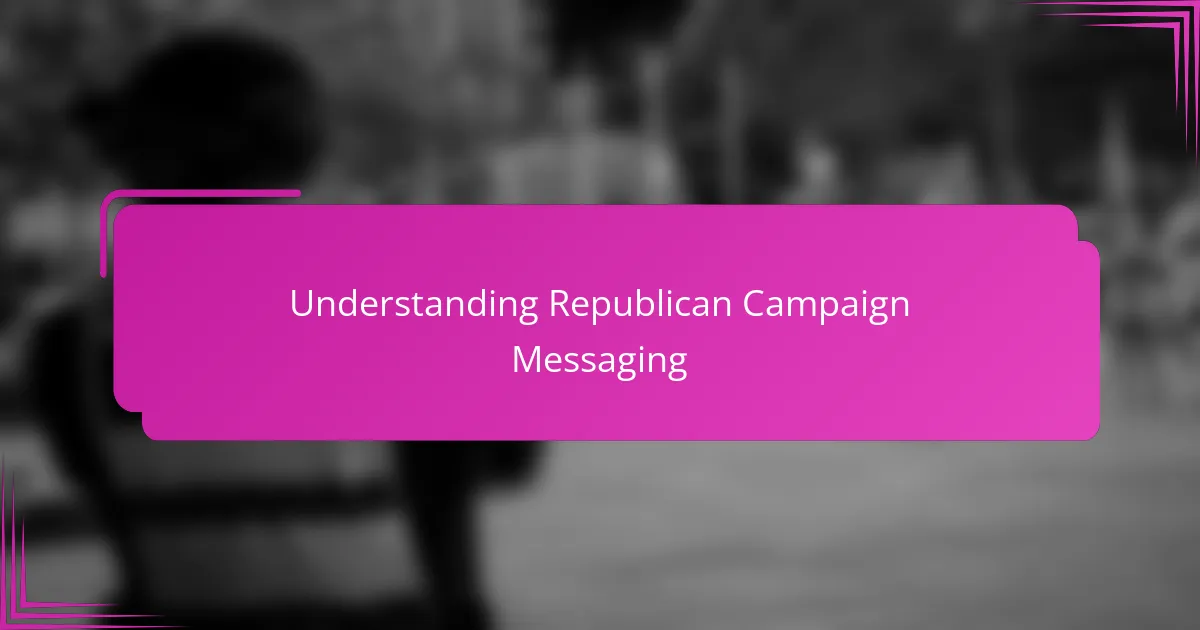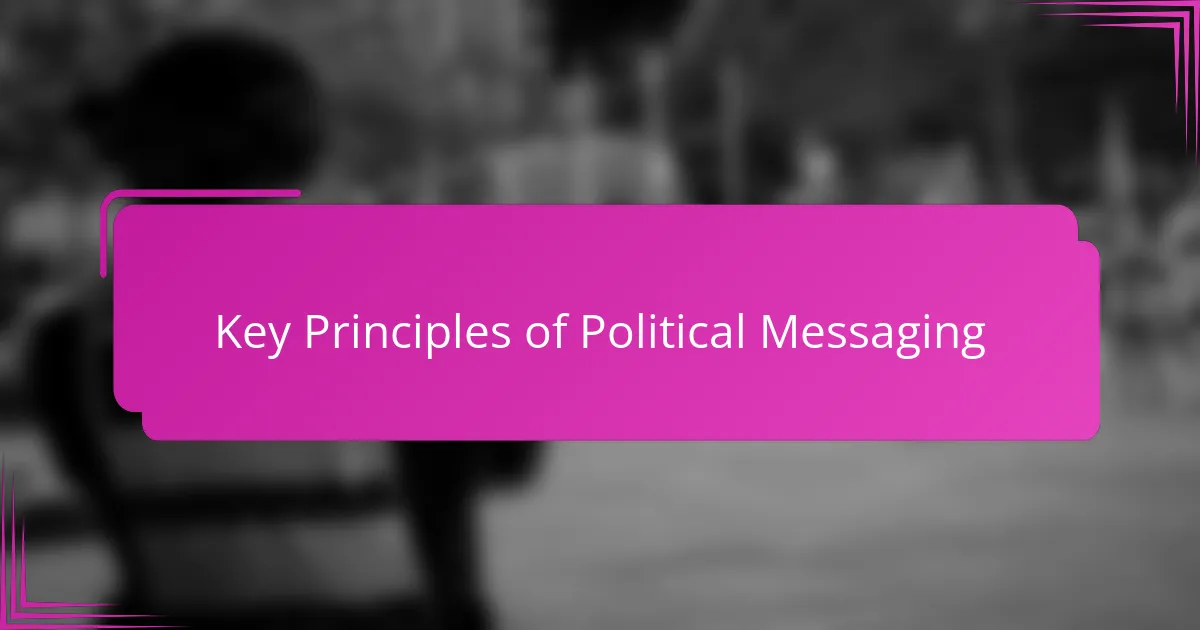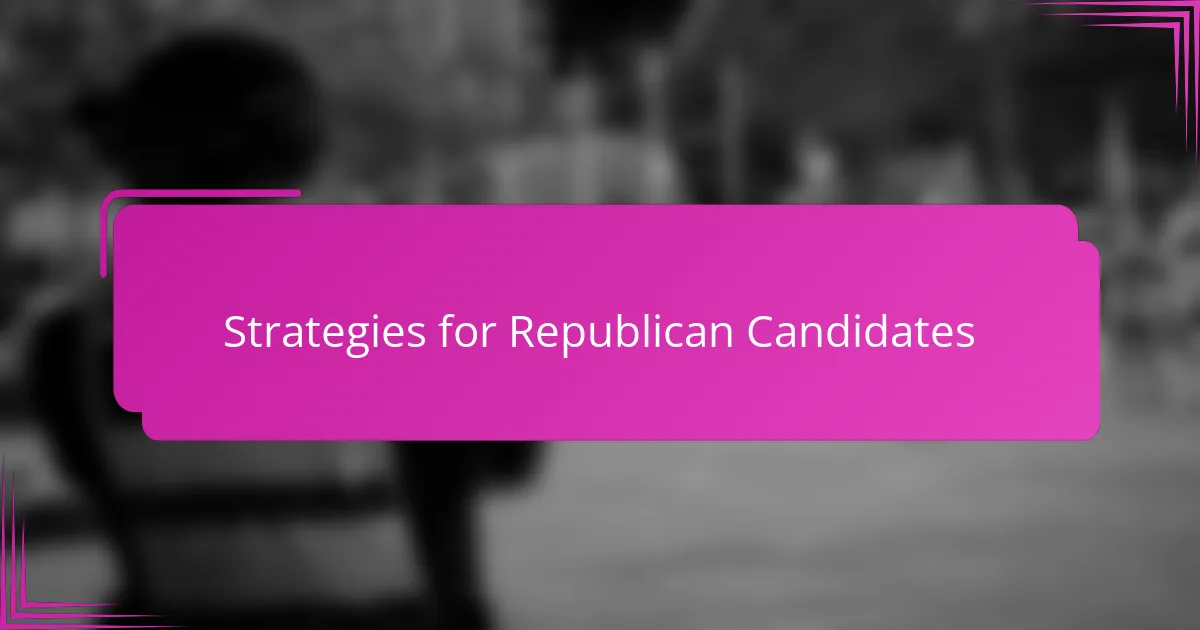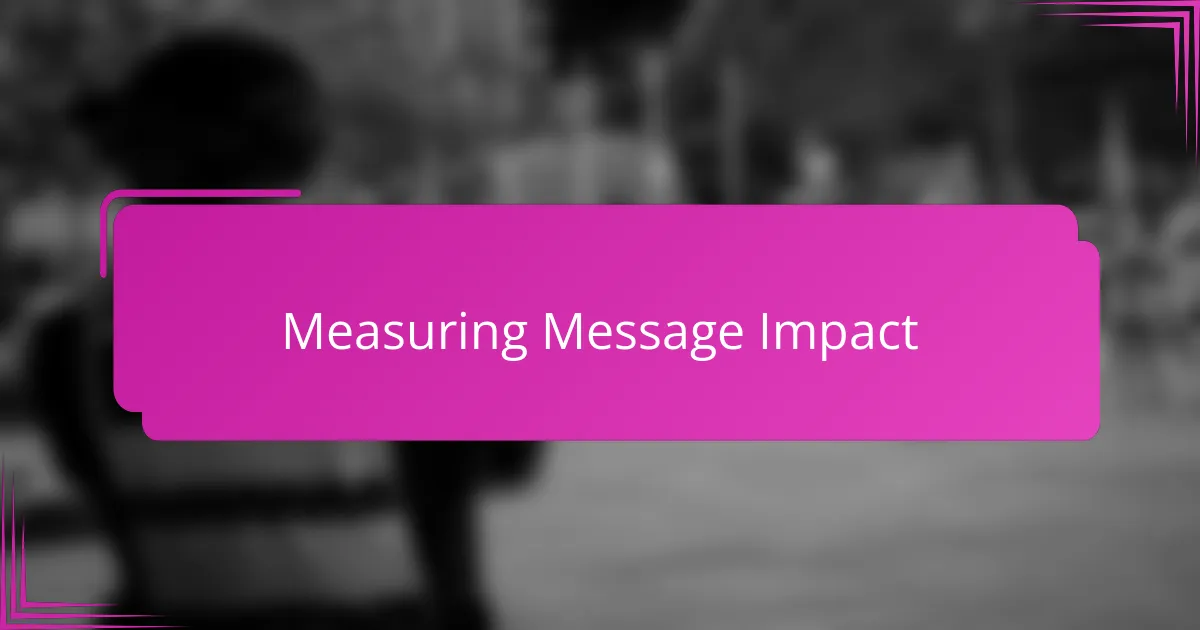Key takeaways
- Effective campaign messaging requires clarity, emotional connection, and relatability to resonate with voters.
- Understanding voter demographics allows for tailored messages that address specific concerns and values of different groups.
- Authenticity and flexibility in messaging lead to stronger connections with the electorate and increased trust.
- Consistent repetition of core themes reinforces reliability and helps solidify a candidate’s credibility.

Understanding Republican Campaign Messaging
Understanding Republican campaign messaging goes beyond memorizing slogans; it’s about tapping into core values that resonate deeply with voters. In my experience, successful messaging hinges on reflecting principles like limited government, personal responsibility, and strong national defense in ways that feel authentic and relatable.
Have you ever noticed how some messages just stick with you? That’s no accident. Crafting these messages requires not only a grasp of policy but also an emotional connection—making voters feel seen and heard, especially during turbulent political times.
I remember working on a campaign where the key was simplifying complex issues without losing substance. Striking that balance gave the message power, and more importantly, it sparked conversations among everyday people who then felt inspired to take action.

Key Principles of Political Messaging
What truly matters in political messaging is clarity. I’ve found that when messages are straightforward, voters don’t just hear them—they understand and remember them. It’s like having a conversation over coffee; if you confuse someone, you lose their attention immediately.
Another principle that guides me is consistency. Repeating key themes, like economic freedom or family values, helps build trust over time. Have you noticed how people tend to rally behind ideas they hear repeatedly? That’s no coincidence—it’s messaging working its subtle magic.
Finally, emotional resonance can’t be overlooked. From my experience, people don’t just vote on facts—they respond to feelings. When a message taps into hope, pride, or even frustration, it moves beyond words and becomes a call to action. Have you ever felt that moment when a candidate’s message just clicked? That’s the power of connecting on a human level.

Analyzing Voter Demographics
Diving into voter demographics is where the messaging magic really starts. I’ve learned that understanding who voters are—their age, income, education, and community—allows me to tailor messages that don’t just talk at people but speak directly to their lives. For example, when I worked on a campaign in a rural district, recognizing the importance of agricultural issues shaped a message that felt personal and urgent.
Have you ever wondered why some slogans resonate more in certain areas? It’s no coincidence. A middle-aged blue-collar worker in the Midwest has different concerns than a young professional in a suburban district. By breaking down the data and listening carefully, I found ways to connect with each group’s unique hopes and worries, making the messaging far more powerful than generic talking points.
I remember a moment when demographic insights completely shifted our approach. We realized the Hispanic vote was growing in a key county, so we adapted our outreach to reflect values like family and opportunity, blending them naturally into the campaign’s core themes. That pivot wasn’t just strategic; it was a lesson in respecting and honoring the diverse voices within the Republican base.

Crafting Effective Candidate Messages
One of the biggest challenges I faced crafting candidate messages was making sure each word carried weight without overwhelming the audience. How do you convey serious policy positions while keeping the tone approachable? I found that weaving in relatable stories and straightforward language helped bridge that gap, allowing voters to connect emotionally without getting lost in jargon.
I also learned that strong messages often start with listening—really hearing what people care about. During one campaign, a casual town hall conversation revealed local anxieties about job security that hadn’t come up in polling data. Incorporating that insight created messaging that felt not only authentic but urgent, showing voters their concerns were front and center.
Have you ever noticed how a simple, repeated phrase can stick in your mind? That’s not accidental. I deliberately chose concise themes that echoed core Republican values, repeating them across speeches, ads, and social media. This consistency built familiarity and trust, making the candidate’s message more memorable and compelling over time.

Strategies for Republican Candidates
When shaping strategies for Republican candidates, I always emphasize the power of tailoring messages to local priorities. For instance, in a suburban district, stressing school choice and public safety resonated far more than broad economic rhetoric. Have you ever seen how a well-targeted message can transform voter enthusiasm? I have, and it’s a game changer.
Another key strategy I rely on is reinforcing core Republican ideals through consistent themes. Repetition isn’t just about hammering a point; it builds a sense of reliability and shared identity with voters. I remember one campaign where weaving the idea of personal responsibility into every speech helped solidify the candidate’s credibility—it felt like we were speaking directly to people’s values.
Of course, timing and medium matter just as much as content. Choosing when and where to deliver these messages—whether through social media bursts or grassroots events—makes a huge difference. One particular campaign taught me that being present in community gatherings, not just on TV, forged authentic connections that digital ads alone never could. Have you tried blending both approaches? The results are worth it.

Measuring Message Impact
Measuring message impact isn’t just about counting likes or shares; it’s about understanding whether the message truly moved people. I’ve often asked myself, did this message inspire a conversation? Did it change a mind or reinforce a belief? Tracking responses through polls, focus groups, and even casual voter feedback has been invaluable in answering these questions.
Sometimes, the numbers tell one story, but the real impact shows up in unexpected ways. I recall a campaign where social media engagement seemed modest, yet turnout in key precincts surged. That taught me that impact can be quieter but just as powerful—votes speak louder than clicks.
It’s also crucial to adapt quickly when a message misses the mark. Have you ever seen a slogan that fell flat? I have, and reviewing voter reactions early helped us pivot to clearer, more compelling language. Measuring impact isn’t a one-time task; it’s an ongoing conversation with the electorate that keeps the message sharp and relevant.

Lessons from Campaign Experience
One lesson from my campaign experience is that authenticity can’t be faked. Voters quickly sense when a message is just rehearsed lines versus a genuine reflection of a candidate’s beliefs. I recall a moment when we shifted from generic talking points to stories rooted in the candidate’s own life—suddenly, people leaned in, related, and responded with enthusiasm.
Another thing I realized is flexibility is key. No message is perfect from the start. During one campaign, early feedback showed our economic pitch wasn’t resonating as we’d hoped, so we adjusted by highlighting how policies would tangibly improve local families’ daily lives. That willingness to pivot made all the difference in building trust and momentum.
Have you noticed how timing shapes a message’s impact? From my experience, hitting the right tone at the right moment—whether responding to a current event or voter sentiment—can transform a phrase from a bland line into a rallying cry. Understanding this taught me that messaging is as much about reading the room as it is about crafting the words.